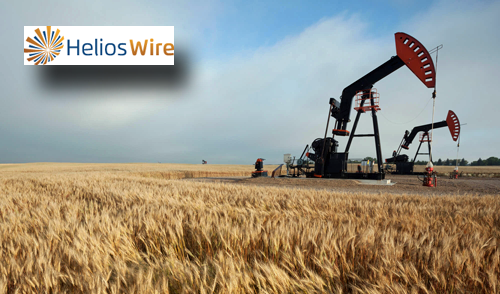 Helios Wire has raised an additional USD$4 million in financing to help facilitate the launch of the firm's first two satellites — these funds will be allocated towards the development of the satellite-based IoT system being built by Helios.
Helios Wire has raised an additional USD$4 million in financing to help facilitate the launch of the firm's first two satellites — these funds will be allocated towards the development of the satellite-based IoT system being built by Helios.The Boston Consulting Group has predicted that $267 billion will be spent on IoT technologies, products, and services by 2020. Already, IoT is improving operations, but small and medium-sized companies have yet to fully capitalize. With increased affordability of IoT, data generation and predictive analytics — powered by artificial intelligence technologies similar to those provided by Helios — companies large and small can benefit from what’s already becoming an industrial revolution.
In June of 2015, the McKinsey Global Institute reported that the potential economic impact of IoT would grow from $3.9 trillion to $11.1 trillion by 2025. By 2020, it’s anticipated that there will be as many as 30.7 billion trackers worldwide, though many of those trackers (via communications satellites) and bandwidth costs are prohibitively expensive. Applications requiring mid-latency data transmissions will remain the focus as the first two Helios satellites reach operation. As subsequent satellites are launched, the system will offer increasingly lower latency data for near real-time monitoring.
According to Scott Larson, CEO and Co-founder of Helios Wire, the funds from this round of financing will be put toward the launch of the company's first satellite this Christmas, as well as the two other satellites scheduled to be launched during the second half of 2018. Today, Industrial IoT is frequently considered to be costly, inaccessible, and best suited for larger, international organizations; but that won’t always be the case. A seismic shift is underway in the manner in which industries operate. Helios Wire's goal is to make certain that companies and organizations, regardless of size, are able to participate in the enabling technologies of IoT, particularly in the industrial sectors.
“For small-to-medium sized businesses, the Helios system would reduce capital and operational expenses and infrastructure costs, allowing for more rapid technological adoption. For instance, a small-scale farmer will be able to use Helios Wire’s economical IoT service to optimally manage a handful of fields. As well, multinational shipping corporations and exporter-importers will be able to optimize fleets and shipments,” Larson stated. “For the purposes of agriculture, infrastructure, and some asset monitoring, 12-hour latency is more than enough to provide heightened analysis and optimization of processes,” explains Larson.
For more information, visit .

